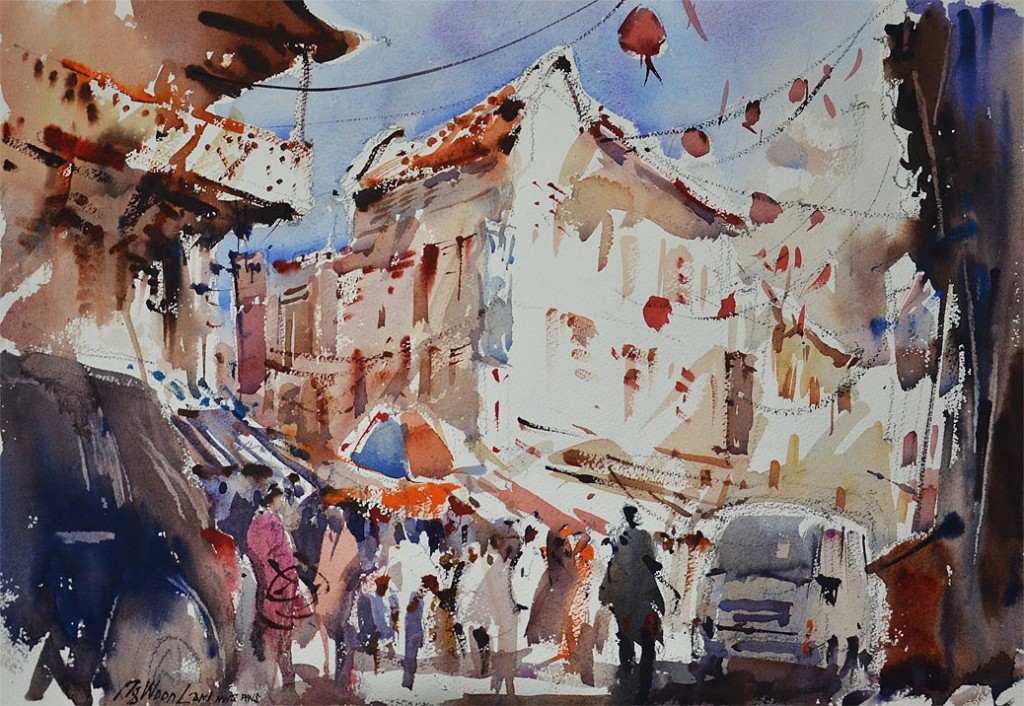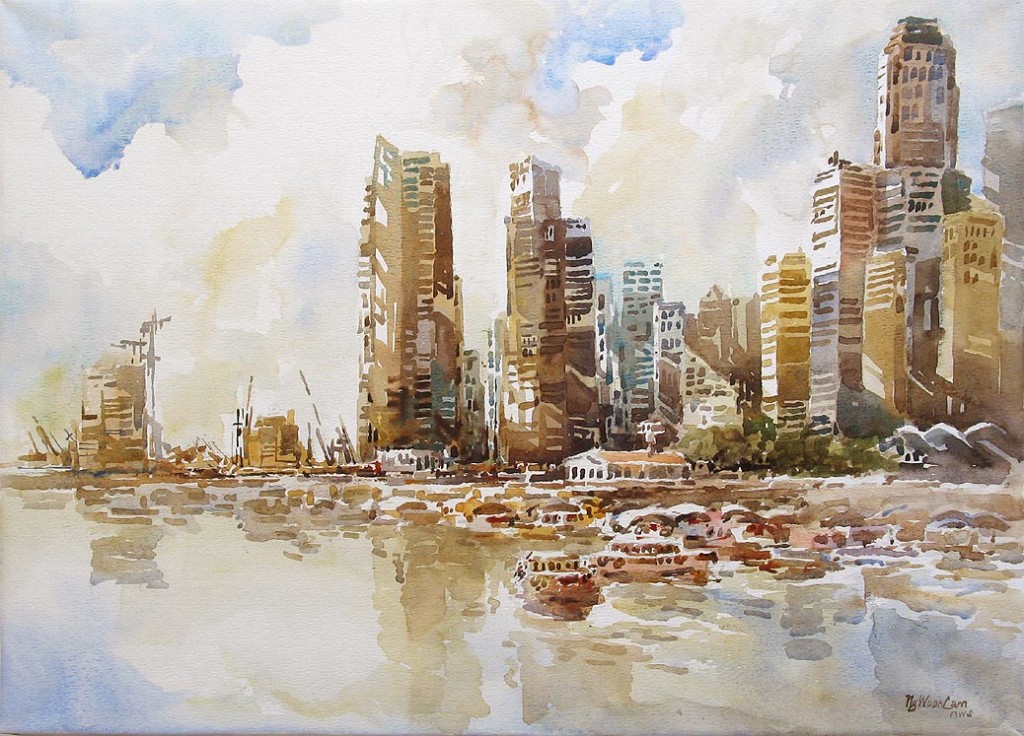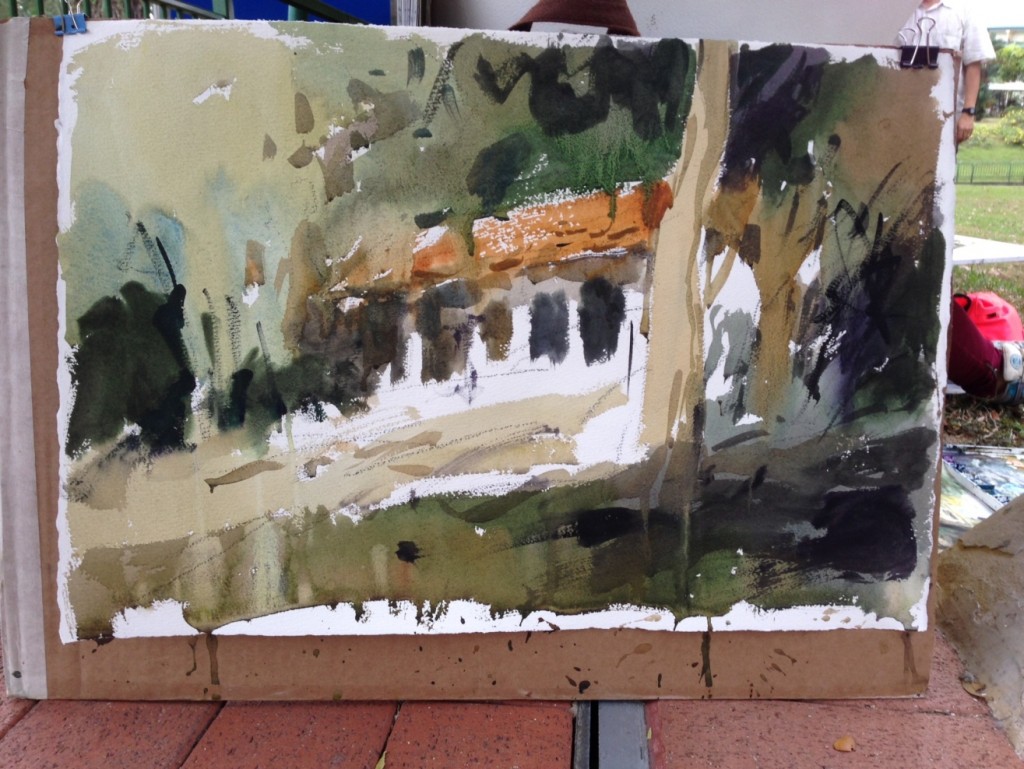Hi, everyone! It’s been awhile since I wrote something related to school. In this post, I’ll be touching on something not new to most of us – watercolour painting.
My ADM professor, Asst Prof Ng Woon Lam, is a well-known watercolour painter in Singapore. He recently won his second Bronze medal from the American Watercolour Society. I’m very inspired by his work.
So, what is there to learn from watercolour painting? Quite a lot, as I recently found out from a module I’m taking that teaches watermedia landscape painting.
Painting a landscape
As strange as it sounds to those new to watercolour, you don’t need to be super good at sketching out every minutest detail. More important is to be able to capture the tones and contrasts of the landscape.
Here are examples of Asst Prof Ng’s works. Look at the rich colours used and the composition of each landscape. Really awesome.
Here is an image of my prof’s work that I took while he was teaching us.
What can you see? This is actually near Hall 2. Take the zebra crossing opposite ADM, and you might be able to spot this scene.
What my prof has done here is somewhat an impressionistic take on a scenery.
Achieving this requires an understanding of “contrast and tones”. That is, learning to distinguish between dark-tone areas, middle-tone areas and light-tone areas. This way, we are able to segregate the various forms and allow our eyes to travel through the image. Decipher the light areas (you can leave them white), as well as the middle tone and dark areas (the shadows), and you might get a pattern like this.
Before attempting to paint, it’s a good idea to create a “tonal study” of the scenery before you. This might involve first doing a black, white and grey sketch of what you are attempting to paint. Paint with reference to this monotone image you created.
Want to know more? I’ll be touching on colour theory in my next post.
Catch ya’ll soon. ^^
Comments? Email us at hey@ntu.edu.sg





